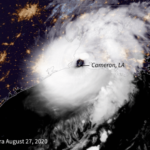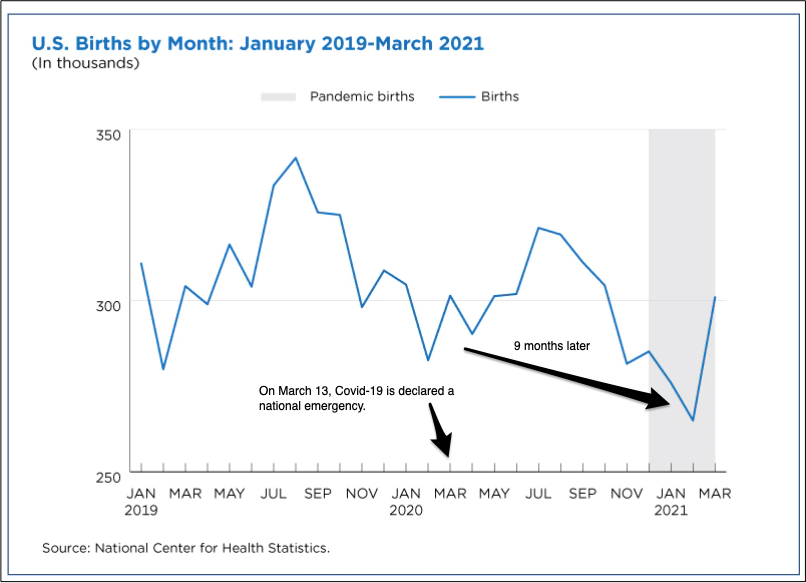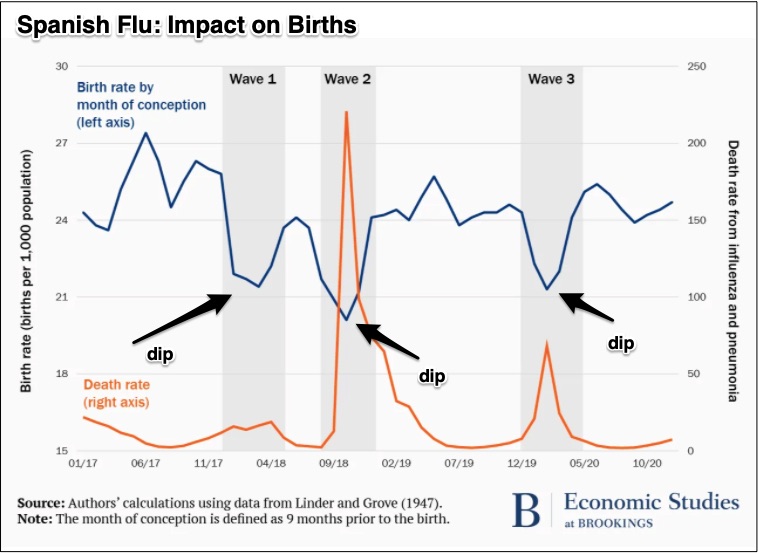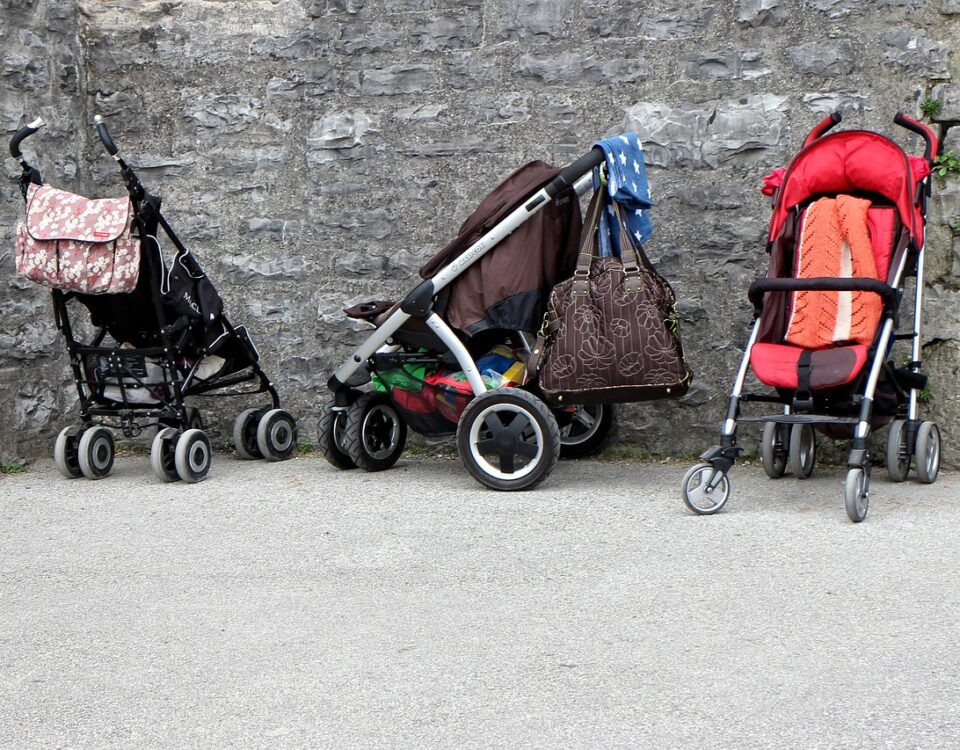
The Cost of a Weather Warning
December 14, 2021
How We Shop When We Are Single
December 16, 2021Because of the 1918 pandemic, we had fewer babies. The blue line and my arrows display the three dips:
Now, we appear to have a similar decline–but just temporarily.
The Pandemic Birth Rate
If there is a gap between the past birth rate and babies born during the pandemic, then we have “missing births.” Reasons for a lower pandemic birth rate can range from economic insecurity, to stress, to the kids being home from school.
Looking at the pandemic, we can see the normal cycle of births change. Typically, birth rates have a winter low and summer peak. Meanwhile they increase during the spring and decline in the fall. Yes, paralleling the seasonal cycles, births did drop in December 2020. However, the numbers were far larger. In December 2020–nine months after Covid-19 was declared a national emergency– there were 763 fewer births each day than from the previous year. Then, perhaps, reflecting a deep but brief recession, we soon see an upswing.
Below, you can see the Covid-19/birth rate correlation:

Athletic events, blackouts, and storm advisories each have a contemporaneous impact on the birth rate. Rejoicing after an athletic victory can increase the subsequent the birth rate. So too can a low-severity storm advisory or a blackout. Meanwhile, it’s a bit different for recessions and pandemics. Here we not only might have a contemporaneous reason but also couples are looking ahead. When economists explained descending birth rates in Italy after the Great Recession, they cited economic uncertainty as one of many possible reasons.
Our Bottom Line: Elasticity
The economic concept of elasticity can provide some insight about pandemic babies. Related to demand, the elasticity just indicates how much more or less we would buy when price changes. If a price change generates a proportionally large rise or fall, then our demand is elastic. If the change is minimal, then we have inelasticity.
Taking the leap to birth rates, we can hypothesize that the decision to have a child also reflects elasticity. Here though, couples are responding to a change in current circumstances or the future state of the economy. A large change in the birth rate reflects an elastic reaction while a small one is inelastic.
My sources and more: For some dependable data, the Census numbers always come in handy. Then, for disaster births, do look at this Zanzibar study and this academic paper on hurricanes. But, more up-to-date, this Brookings paper and research on the Great Recession are also possibilities.
![econlifelogotrademarkedwebsitelogo[1]](/wp-content/uploads/2024/05/econlifelogotrademarkedwebsitelogo1.png#100878)





